From rhetoric to realisation of climate actions at COP27

The two-week-long 27th Conference of Parties (COP27) of the United Nations Framework Convention on Climate Change (UNFCCC) began in Sharm el-Sheikh, Egypt on Sunday (November 6, 2022). The context of this COP is quite different from the last one. COP27 is shadowed by extreme global financial and geopolitical crises. Inflationary pressure and food and fuel crises have hit all countries – so much that some advanced countries are deviating from their climate commitments. Against this backdrop, the COP27 presidency of Egypt envisions "to move from negotiations and planning to implementation." Indeed, accelerated actions are needed for urgent issues such as mitigation, adaptation, finance, and climate justice for loss and damage.
A key expectation in Sharm el-Sheikh is to have a stronger commitment from nations to reduce their emissions to keep global warming below 1.5 degrees Celsius in order to minimise the negative impact of climate change. The 2015 Paris Agreement set the ambition to keep global warming below two degrees Celsius above pre-industrial levels, but preferably limiting it to 1.5 degrees. The 2022 report of World Resource Institute (WRI 2022) on Nationally Determined Contributions (NDCs) for emission reduction indicates that even though countries are implementing the Paris Agreement, the pace and scale of emission reduction must be enhanced to achieve the global climate ambition. Despite their low emission levels, the climate-vulnerable least developed and developing countries have also made mitigation commitments in their NDCs.
The adaptation issue received more attention at COP26 than before. The comprehensive two-year Glasgow-Sharm-el-Sheikh work programme on the Global Goal on Adaptation (GGA) was launched at COP26. The work programme aims to strengthen resilience and reduce vulnerability to climate change. It was mentioned that countries would devise methodologies to assess progress on adaptation goals. COP27 will be an opportunity to take stock on such progress.
An important outcome of COP26 was developed countries committing to double their adaptation funding by 2025. This is because climate change has created insurmountable challenges for the least developed and developing countries. According to the Global Climate Risk Index (GCRI) 2021, the 10 most affected countries from 2000 to 2019 (annual averages) are least developed and developing countries – including Bangladesh. The report further informs that in 2019, storms and their direct implications such as rain, floods and landslides were a major cause for loss and damage. The GCRI 2021 report also reveals that among the 10 most climate-affected countries in 2019, six were hit by tropical cyclones. It is understood that with higher temperatures, occurrences of severe tropical cyclones will increase.
To reduce climate vulnerabilities and shocks and adapt to the rapidly changing environment, low- and lower-middle-income countries require financial resources. An adaptation fund is needed to build and strengthen resilience so that climate-vulnerable countries can continue their economic activities. Such a fund is required for enhancing their early warning systems for natural disasters. As the majority of low-income countries rely on agriculture, there is a need for technology for the farmers to receive better and updated data on weather and markets.

Back in 2009, at COP15 in Copenhagen, developed countries committed to collectively mobilise an amount of USD 100 billion every year by 2020 for the developing countries to undertake climate actions. The annual commitment target of USD 100 billion was extended to 2025 at COP21 in Paris. Unfortunately, that target has not yet been reached. According to the Organization for Economic Co-operation and Development (OECD), the total climate finance provided and mobilised by developed countries amounted to USD 83.3 billion in 2020. Of this fund, 58 percent was for mitigation, 34 percent for adaptation, and seven percent for cross-cutting activities. Though adaptation finance grew the most in 2016-2020, mitigation finance has been the highest on average during this period. Therefore, how developed countries will meet the USD 100 billion target and how climate finance will be arranged post-2025 are urgent issues for least developed and developing countries.
Despite demands from climate-change-affected countries for several years, the issue of loss and damage has been contentious at the global forum. It is feared that a few countries will face irreversible losses and damages due to climate change. Such losses and damages are not only economic in nature, but also social and cultural. People will lose their homes, economic opportunities, agricultural and industrial production, tourism, and other services; some of these losses and damages cannot be valued in monetary terms.
There was some progress in the discussion of loss and damage at COP26. The Glasgow Pact calls for action to avert, minimise and address loss and damage. At COP25 in Madrid, the Santiago Network on Loss and Damage was established while at COP26, countries agreed to operationalise and fund the Santiago Network on Loss and Damage. There have also been commitments to finance for loss and damage from the governments of Scotland, Denmark, and the Wallonia region of Belgium, as well as a few philanthropies such as the Children's Investment Fund Foundation, the European Climate Foundation, the William and Flora Hewlett Foundation, the Open Society Foundations, and the Global Green Grants Fund. However, such a financial mechanism should be a part of the agreement at COP27 to address loss and damage.
Overall, COP27's success will be defined by stronger mitigation commitments, further action on adaptation, enhanced flow of climate finance for both mitigation and adaptation measures, and a higher focus on the issue of climate justice by paying for loss and damage to the climate-vulnerable countries.
Dr Fahmida Khatun is executive director at the Centre for Policy Dialogue (CPD). Views expressed in this article are the author's own.

 For all latest news, follow The Daily Star's Google News channel.
For all latest news, follow The Daily Star's Google News channel. 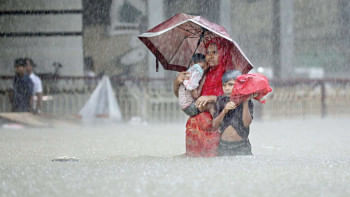
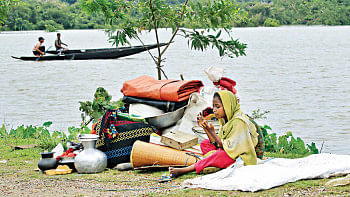
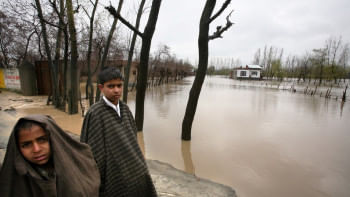


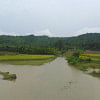



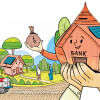


Comments